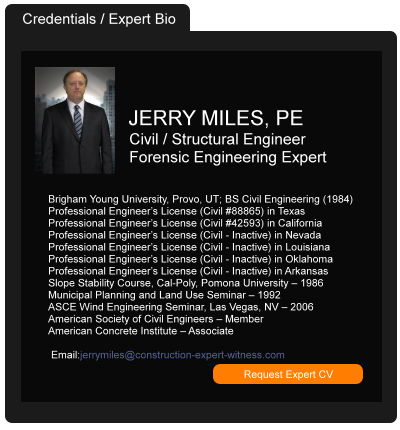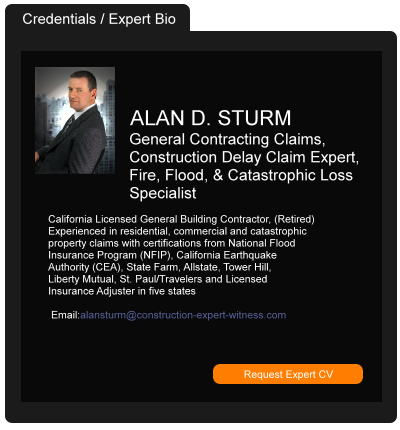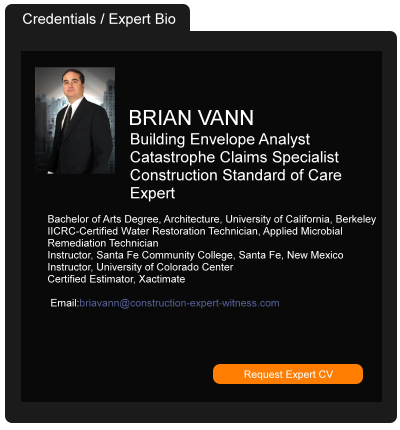Electronic Signatures On Contracts: Are They Truly Compliant?
April 10, 2023 —
Rebecca S. Glos - ConsensusDocsElectronic Signatures On Contracts: Are They Truly Compliant
As companies move to work-from-home situations in the wake of the COVID-19 pandemic, the issue of whether electronic signatures are legally recognized becomes more relevant. For many platforms, an electronic signature merely requires logging in, clicking a button, or typing your name. This process, which replaces the mighty pen and quill, is so effortless that oftentimes an electronic signature may feel like it does not carry the same weight as a handwritten signature. Thus, the question that we should be asking ourselves is whether the law recognizes this type of signature as being valid? Additionally, if electronic signatures are, indeed, valid, are there exceptions on whether they can be used?
Difference Between “Electronic” And “Digital” Signatures
Before delving into this issue, an understanding of some related terms may be helpful. In basic terms, an electronic signature (or “e-signature”) is any signature created or captured through a computer or other electronic device. Electronic signatures can include touch-sensitive screens where you use your finger or a stylus to sign your name as you would on a paper document. Electronic signatures can also include forms where you merely type in your name and perhaps other identifying information, then check a box stating that you intend to sign the document. They cover the full range of technologies and solutions to create signatures electronically such as:
- Clicking “I Agree” on a website;
- Signing with your finger on a mobile device;
- Typing your name or PIN into an online form; or
- Using e-signature software
Read the court decisionRead the full story...Reprinted courtesy of
Rebecca S. Glos, Watt, Tieder, Hoffar, & Fitzgerald, LLP (ConsensusDocs)Ms. Glos may be contacted at
rglos@watttieder.com
Keep it Simple with Nunn-Agreements in Colorado
June 28, 2021 —
Jean Meyer - Colorado Construction LitigationOn May 24, 2021, the Colorado Supreme Court published its decision in Auto-Owners Ins. Co. v. Bolt Factory Lofts Owners Ass'n.[1] There, the Colorado Supreme Court was tasked with answering whether an insurer, who is defending its insured under a reservation of rights, is entitled to intervene as of right under C.R.C.P. 24(a)(2) where the insured enters into a Nunn agreement with a third-party claimant, but rather than entering into a stipulated judgment, agrees with the third party to proceed via an uncontested trial to determine liability and damages. Interestingly, however, while the Court ultimately answered the above question in the negative, the real lesson from the Colorado Supreme Court’s decision is that Colorado litigants should not seek a trial court’s blessing as to liability and damages through non-adversarial proceedings when using Nunn-Agreements. Or, as articulated in Justice Carlos Samour’s vociferous dissenting opinion, Colorado litigants desiring to enter into a Nunn-Agreement should not proceed with a non-adversarial hearing, as doing so is “offensive to the dignity of the courts,” constitutes a “bogus,” “faux,” “sham” and “counterfeit” proceeding, and the hearing provides “zero benefit.”
By way of background, the case arrived in front of the Colorado Supreme Court based on the following fact pattern. A homeowner association (Bolt Factory Lofts Owners Association, Inc.) (“Association”) brought construction defect claims against a variety of prime contractors and those contractors subsequently brought third-party construction defect claims against subcontractors. One of the prime contractors assigned their claims against a subcontractor by the name Sierra Glass Co., Inc. (“Sierra”) to the Association. The other claims between the additional parties settled. On the eve of trial involving only the Association’s assigned claims against Sierra, the Association made a settlement demand to Sierra for $1.9 million. Sierra asked its insurance carrier, Auto-Owners Insurance, Co. (“AOIC”), which had been defending Sierra under a reservation of rights letter, to settle the case for that amount, but AOIC refused. This prompted Sierra to enter into a “Nunn-Agreement” with the Association whereby the case would proceed to trial, Sierra would refrain from offering a defense at trial, the Association would not pursue any recovery against Sierra for the judgment, and Sierra would assign any insurance bad faith claims it may have had against AOIC to the Association.
Read the court decisionRead the full story...Reprinted courtesy of
Jean Meyer, Higgins, Hopkins, McLain & Roswell, LLCMr. Meyer may be contacted at
meyer@hhmrlaw.com
New Strategy for Deterring Intracorporate Litigation?: Delaware Supreme Court Supports Fee-Shifting Bylaws
May 13, 2014 —
Marc Casarino and Lori Smith – White and Williams LLPA fee-shifting bylaw of a Delaware non-stock corporation is not facially invalid according to the Delaware Supreme Court’s May 8, 2014 opinion in ATP Tour, Inc. v. Deutscher Tennis Bund.
In this case, ATP Tour, Inc., a non-stock membership corporation (“ATP”) governed by a seven member board, had adopted a bylaw provision which provided that current and former members of ATP would be responsible for the litigation costs arising out of any litigation initiated by any such member against ATP or any of the other members in which the initiating party did not obtain a judgment on the merits that substantially achieved in substance and amount the full remedy sought. The bylaw provision had been adopted, in accordance with ATP’s charter, by the Board unilaterally without any consent from the members. The members had agreed at the time they joined ATP to be bound by the bylaws, as amended from time to time. Two members of ATP initiated a suit against ATP relating to certain actions taken with respect the ATP’s tournament schedule and format alleging both federal antitrust claims and Delaware fiduciary duty claims but did not prevail on any of their claims. ATP then moved to recover its legal fees relating to such actions.
Reprinted courtesy of
Marc Casarino, White and Williams LLP and
Lori Smith, White and Williams LLP
Mr. Casarino may be contacted at casarinom@whiteandwilliams.com; Ms. Smith may be contacted at smithl@whiteandwilliams.com
Read the court decisionRead the full story...Reprinted courtesy of
White and Williams Earns Tier 1 Rankings from U.S. News "Best Law Firms" 2017
November 03, 2016 —
White and Williams LLPWhite and Williams received one National Tier 1 ranking and four Metropolitan Tier 1 rankings in U.S. News - Best Lawyers® "Best Law Firms" for 2017. Firms included in the “Best Law Firms” list are recognized for professional excellence with persistently impressive ratings from clients and peers. Achieving a tiered ranking signals a unique combination of quality law practice and breadth of legal experience.
National Tier 1
Insurance Law
Metropolitan Tier 1
Boston
Insurance Law
Product Liability Litigation - Defendants
Philadelphia
Real Estate Law
Tax Law
Metropolitan Tier 2
Boston
Mergers and Acquisitions Law
Philadelphia
Construction Law
Insurance Law
Tax and Estates Law
Metropolitan Tier 3
Boston
Employment Law - Management
Labor Law - Management
Litigation - Labor and Employment
Philadelphia
Patent Law
Read the court decisionRead the full story...Reprinted courtesy of
University of California Earthquake Report Provides List of Old Concrete Buildings in LA
January 22, 2014 —
Beverley BevenFlorez-CDJ STAFFAccording to a list provided to the city of Los Angeles by the University of California, there are “about 1,500 old concrete buildings that are potentially at risk of collapse during an earthquake,” the Los Angeles Times reported. The list can help the city identify “concrete buildings most likely to fail in an earthquake.”
The report, however, “does not amount to a list of dangerous buildings,” the university scientists told the Los Angeles Times. It is a list of concrete buildings built before 1980. Some of the “buildings are vulnerable, others are not.”
Concrete buildings pose a potentially dangerous threat, reported the Los Angeles Times: “After the Northridge earthquake caused two concrete buildings to collapse and severely damaged others, structural engineers warned that the collapse of a single concrete building ‘has the potential for more loss of life than any other catastrophe in California’ since the 1906 San Francisco earthquake.”
Eric Garcetti, Los Angeles Mayor, has asked Lucy Jones, a U.S. Geological Survey seismologist, to act as his science advisor on earthquake issues. Garcetti has asked Jones “to come up with recommendations by the end of the year on retrofitting issues, including how to get privately owned concrete buildings retrofitted.”
Read the court decisionRead the full story...Reprinted courtesy of
Application of Efficient Proximate Cause Doctrine Supports Coverage
January 06, 2012 —
Tred R. Eyerly - Insurance Law HawaiiRelying on the efficient proximate cause doctrine, the court determined coverage potentially existed for damage caused by water. Union Sav. Bank v. Allstate Indem. Co., 2011 U.S. Dist. LEXIS 134398 (S.D. Ind. Nov. 21, 2011).
The Tods purchased property that was mortgaged by Union Savings. The Tods obtained a Landlords Policy for the property from Allstate. When the Tods were in default on their loan, Union Savings notified them that foreclosure proceedings would commence. Union Savings sent an appraiser to the property who discovered water in the basement. Water and electricity to the building were off. Union Savings notified Allstate and later filed a formal claim under the mortgagee clause in the Landlords Policy. This clause stated, "A covered loss will be payable to the mortgagees named on the policy declaration. . . ."
Allstate denied coverage, citing exclusions for water damage.
Read the full story…
Reprinted courtesy of Tred R. Eyerly, Insurance Law Hawaii. Mr. Eyerly can be contacted at te@hawaiilawyer.com
Read the court decisionRead the full story...Reprinted courtesy of
Fifth Circuit: Primary Insurer Relieved of Duty to Defend Without Release of Liability of Insured
March 02, 2020 —
Bethany L. Barrese & Ashley McWilliams - Saxe Doernberger & Vita, P.C.In Aggreko, LLC v. Chartis Specialty Ins. Co.,1 the Fifth Circuit affirmed a decision by the Texas District Court and held that a Covenant Not to Execute constituted a “settlement” sufficient to exhaust policy limits and terminate a primary insurer’s duty to defend.
This case arose out of a wrongful death suit filed by the parents of James Brenek II (“Brenek”). In 2014, Brenek was fatally electrocuted by an electrically energized generator housing cabinet while performing work on a rig in Texas for Guichard Operating Company, LLC (“Guichard”), a Louisiana-based drilling subcontractor. Guichard had leased the generator from Aggreko, LLC (“Aggreko”). A rental agreement between Guichard and Aggreko required Guichard to maintain commercial general liability insurance during the lease period and list Aggreko and the rig owner, Rutherford Oil Corporation (“Rutherford”), as additional insureds under
the policy.
Guichard’s primary insurance carrier, The Gray Insurance Company (“Gray”), agreed to defend and indemnify Aggreko and Rutherford in the wrongful death suit. The Gray policy had a limit of $1,000,000, subject to a $50,000 self-insured retention.
Reprinted courtesy of
Bethany L. Barrese, Saxe Doernberger & Vita, P.C. and
Ashley McWilliams, Saxe Doernberger & Vita, P.C.
Ms. Barrese may be contacted at blb@sdvlaw.com
Ms. McWilliams may be contacted at amw@sdvlaw.com
Read the court decisionRead the full story...Reprinted courtesy of
Explore Legal Immigration Options for Construction Companies
August 29, 2022 —
Megan R. Naughton - Construction ExecutiveAlthough the visa options are limited, there are some that can be explored by construction companies in the United States, including the following.
H-1B
The H-1B visa category may be available for construction positions that require at least a bachelor’s degree in a specific field such as civil engineering, construction management or accounting. The timing can be challenging if an employer is looking to hire a recent graduate or someone outside of the United States for a role because of the H-1B lottery but can work well if the candidate is already in H-1B status and working for another company. These visas are site-specific, so they may need amending if a worker is moved from one site to another.
H-2B
The H-2B visa category is an option if the construction work is seasonal in nature and recurs each year, and if the company can plan its specific needs sufficiently far in advance. Timing is difficult with these; they require proving a shortage of U.S. workers and are subject to a lottery system like the H-1B.
Reprinted courtesy of
Megan R. Naughton, Construction Executive, a publication of Associated Builders and Contractors. All rights reserved.
Read the court decisionRead the full story...Reprinted courtesy of


































































